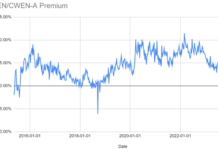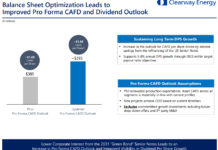by Jared Wiedmeyer
For the past few years, solar industry stakeholders have imagined a future where the general public has the ability to invest in pure-play renewable energy real estate investment trusts (REITs) that finance and construct both utility-scale and distributed photovoltaic (PV) projects in the United States. While these stakeholders wait for this reality to come to fruition, existing REITs already have several options to own or develop solar projects that still allow them to comply with the IRS’s asset and income tests. This past May, Chadbourne & Park’s Kelly Kogan and Scott Bank moderated a roundtable with representatives from several REITs who discussed the options available to REITs to invest in PV systems [1]. I’ve summarized these options here and provided some additional background information on how these strategies comply with existing IRS regulations.
Option 1 Utilize a taxable REIT subsidiary (TRS) to own PV projects
A TRS is a subsidiary of an existing REIT that provides services (anything in addition to customary real estate services) to the REIT’s tenants without jeopardizing its status as a REIT [2]. Unlike its parent REIT, a TRS pays corporate income tax because the income derived from these services is not considered “good” income by the IRS. Generally speaking, good income is income derived in some way from real property [3]. According to Will Teichman from Kimco Realty, a REIT can utilize its TRS to develop, secure financing for, and own rooftop PV systems [1]. The TRS can pass the benefits from the ITC or 1603 cash grant to the project’s investors. The TRS can also sell the power generated to the building’s tenants, and it can manage all aspects of the project, including systems operations, customer billing, and securing contracts for the sale of solar renewable energy certificates. The TRS must pay taxes on this income, but it can potentially distribute some of its after-tax income to the REIT in the form of a dividend.
- Example: Kimco Realty (KIM) owns and operates 874 neighborhood and community shopping centers in 44 states with 128 million ft2 of rooftop space [4].
- Results: Kimco’s TRS has developed and assumed ownership of 3 MW of PV projects, mostly located in New Jersey.
Option 2 Utilize a TRS to develop and construct PV projects
A REIT can utilize a TRS to develop and construct PV projects, but instead of owning the project after construction, the TRS can sell its ownership interest to an investor or utility. Electricity generated by the project is retained by the utility or is sold to an offtaker under the conditions of a long-term power purchase agreement (PPA). In this case, the TRS only acts as a construction contractor, and the parent REIT collects rent for leasing the rooftop space to the project owner, which is considered good income by the IRS [1].
- Example: Prologis (PLD) One of the largest industrial REITs in the world, Prologis owns and operates industrial warehouses and distribution centers around the world with 550 million square feet of rooftop space [5].
- Results: Prologis hosts about 100 MW of solar that its TRS developed and sold. These systems are mostly located in southern California, but it has also developed systems in Europe and Japan [1].
Option 3 Lease space to solar developers and project owners
In this case, a REIT owns rooftop space or land but does not form a TRS to construct or develop the PV project. Instead, the REIT will lease the rooftop or land to a PV project developer, which will pay the REIT monthly rent. This rental income is considered good income by the IRS [1].
- Example: Power REIT (PW) is an infrastructure REIT whose primary asset is its ownership of the land under the Pittsburgh and West Virginia Railroad.
- Results: PW has recently expanded its scope to owning and renting land under PV projects and has purchased the land under a 5.7-MW PV facility in Massachusetts and rented it to the project owner. The company has also entered into a term sheet to acquire 100 acres of land in California that will host 20 MW of PV projects currently in development [6].
Option 4 Implement a diversified approach to sustainability/energy efficiency/renewable energy financing
In this case, a mortgage REIT utilizes a diversified approach to “green” investing but focuses most of its efforts on lending for energy efficiency (EE) investments and other building structural improvements, such as efficient HVAC systems. These improvements are permanently affixed to buildings and integrated into its systems so they are classified as good assets, and any interest income on loans secured by these systems is considered good income by the IRS [7]. When such a REIT builds up a large enough portfolio of these EE assets, it can choose to diversify its lending practices into other sectors that may not qualify as good assets or good incomesuch as utility-scale renewable energy projectsas long as the characteristics of these loans do not exceed the IRS’s asset and income tests, which are discussed on REIT.com [8].
- Example: Hannon Armstrong Infrastructure Capital (HASI) is a project finance firm with more than 30 years of experience in EE and renewable energy finance with $1.6 billion of assets under management.
- Results: HASI raised over $150 million in an April initial public offering and plans to invest in additional EE and renewable energy projects. The company holds many EE-related assets on its balance sheet, allowing it to make a significant amount of loans to renewable energy projects and still meet the asset and income test thresholds [9].
Option 5 (potential) Form a Canadian income trust
Instead of pursuing a private-letter ruling to classify renewable energy as “real property,” or conforming to existing U.S. limitations, a company could choose to form a Canadian income trust. This entity is a pass-through entity, similar to a REIT, and it trades on the Canadian stock exchange. Unlike IRS regulations, Canadian tax laws do not prohibit the types of assets this company can own, but the trust’s property cannot be used to conduct business in Canada [1]. This stipulation makes such a trust a potential option for owning PV projects in the United States. At the time of this writing, this option was actively being pursued, but to my knowledge there is not yet a Canadian income trust specializing in renewable energy projects on the Canadian stock exchange.
- Example: CleanREIT is an early-stage REIT engaged with investment bankers whose goal is to issue an initial public offering on the Canadian stock exchange.
- Results: To be determined, but it should be noted that non-Canadian investors face an additional 15% tax to repatriate any dividend income they receive [10].
Table 1 below presents some selected market characteristics of the companies discussed earlier. As you can see, the types of REITs actively investing in PV projects vary widely, suggesting that investing in PV is more dependent on a REIT’s corporate mission rather than its organizational structure. For example, Prologis is a large-cap REIT with $45 billion of assets under management, while PW is a small-cap REIT with only $10 million of assets under management, yet both have made significant i
nvestments in PV projects.
| Name | Share Price 9/16/13 | 52-week range | Market Cap | Total AUM | Gross Leasable Area | Location | MW of PV Developed |
|---|---|---|---|---|---|---|---|
| Sector Focus | Renewable Energy Investment Vehicle | ||||||
| Kimco (KIM) | 20.65 | 18.11-25.09 | $9.13 billion | $8.46billion | 131.3 million ft2 | North and South America | 3 MW |
| Retail and shopping centers | TRS develops, owns, and operates PV system | ||||||
| Prologis (PLD) | 37.59 | 32.31 – 45.52 | $18.74 billion | $45 billion | 554 million ft2 | Global | 100 MW |
| Industrial warehouses and distribution centers | TRS develops and constructs project, but sells project to third party once operational and collects rooftop rent payments from new owner | ||||||
| Power REIT (PW) |
8.36 | 6.98-11.41 | $14.01 million | $12.3 million | 2.35 million ft2 (4.36 million ft2 pending) | United States | 25.7 MW |
| Railroads, renewable energy projects | Owns land under PV project | ||||||
| Hannon Armstrong Infrastructure Capital (HASI) | 11.85 | 9.15 – 12.51 | $187.11 million | $1.6 billion | N/A (mortgage REIT) | United States | N/A |
| EE, renewable energy, sustainable infrastructure | Provides loan syndication services for renewable energy projects, lends to building owners that construct renewable energy systems that are integrated into the buildings they own | ||||||
- CleanREIT’s IPO is currently in the planning stages, and no market data is available for the company.
- All stock price information gathered from Yahoo! Finance on September 16, 2013.
Despite the many obstacles standing in the way of pure-play solar REITs, the REIT pioneers discussed here have found ways to work within the existing IRS rules to develop a significant amount of PV projects. Each company offers a unique way to mine good income from the sun, and the efforts of each REIT have worked to bring more clarification as to what the future of solar REITs could look like.
Jared Wiedmeyer is a Research Program Participant with the National Renewable Energy Lab’s Project Finance Team. His work at NREL includes studies in geothermal permitting and its effects on levelized cost of energy, community solar finance, and capital markets-based risk management strategies for renewable energy projects. Jared holds a B.S. in Cartography and Geographic Information Systems from the University of Wisconsin, and an MBA in Finance from the Leeds School of Business at the University of Colorado at Boulder.
This article wasfirst published on NREL’s Renewable Energy Project Finance blog, and is reprinted with permission.
References:
[1] Bank, S.; Kogan, K. (June 2013). “How REITs Are Already Investing in Renewables.” Project Finance NewsWire. New York, NY: Chadbourne & Parke LLP. Accessed August 12, 2013: http://www.chadbourne.com/files/Publication/6f0ba428-858a-471b-83af-ab16441780ba/Presentation/PublicationAttachment/99648285-ef43-4ec7-8593-b64ab8e9d8a6/pfn_june13.pdf.
[2] Matheson, T. (2001). “Taxable REIT Subsidiaries: Analysis of the First Year’s Returns, Tax Year 2001.”Internal Revenue Service. Accessed August 12, 2013: http://www.irs.gov/pub/irs-soi/01reit.pdf.
[3] REIT.com. (2013). “The Basics of REITs.”Accessed June 19,2013: http://www.reit.com/REIT101/REITFAQs/BasicsOfREITs.aspx.
[4] Kimco Realty. (August 2013). “Current Investor Presentation.” Accessed August 12, 2013:
http://investors.kimcorealty.com/CorporateProfile.aspx?iid=102965.
[5] Prologis. (2012). 2012 Annual Report. Accessed August 12, 2013: http://ar2012.prologisweb.com/prologis_2012_annualreport.pdf.
[6] Power REIT. (2013). “Power REIT Securities and Exchange Commission Form 10-Q.” Accessed August 12, 2013: http://filings.irdirect.net/data/1532619/000153261913000029/firstquarter201310-qfinal.pdf.
[7] Kogan, K. (2013). “Is the IRS Considering Solar REITs?” Renewable Energy World. Accessed June 18, 2013: http://www.renewableenergyworld.com/rea/news/article/2013/06/is-the-irs-considering-solar-reits.
[8] REIT.com. (2013). “Forming a Real Estate Investment Trust.” Accessed June 19, 2013: http://www.reit.com/REIT101/FormingaREIT.aspx.
[9] Hannon Armstrong. (2013). “Investor Relations Presentation: June 2013.” Accessed August 12, 2013: http://investors.hannonarmstrong.com/presentations.aspx?iid=4376922.
[10] Investopedia. (2009). “An Introduction to Canadian Income Trusts.” Accessed June 18, 2013: http://www.investopedia.com/articles/stocks/08/canadian-income-trust-royalty-trust-canroys.asp.








